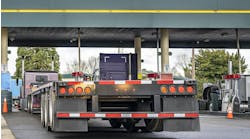Workers may not be all that scarce, but costs are poised to surge
Raise your hand if you didn't think there was a driver shortage in 1999. Only one of you raised a hand - you must be from the Bureau of Labor Statistics. BLS, the agency that counts the nation's work force every month, says trucking and warehousing employment swelled by 4.8% in 1999, far more than the overall gain in employment in the economy. Somebody must have been finding more drivers, and not just hiring another company's existing work force.
In fact, BLS recently projected that light- and heavy-duty truck drivers would remain one of the nation's fastest-growing occupations in terms of number of jobs added over the next several years.
How will fleets continue to add so many drivers in an economy that is sporting the lowest unemployment rate in 30 years? Although individual companies can attract drivers from competitors by offering a variety of amenities and favorable working conditions, the industrywide answer boils down to one short word: "pay."
The process is already well under way. In December, BLS released its annual survey of average wage rates for 777 occupations. In 1998 there were nearly 1.5 million heavy-truck drivers, a 3% increase over 1997. (This tally excludes self-employed owner-operators.) Their wages averaged $14.08 per hour, well above the national median, or midpoint, for all workers.
The category known as bus and truck mechanics and diesel engine specialists earned even more, $14.66 per hour on average. Helpers, laborers, and hand material movers earned $14.77, while supervisors and dispatchers pulled down $18.49 per hour.
Aside from wages, health care and workers' compensation costs are likely to go up in 2000. Recent surveys of health insurance costs show that many employers are facing double-digit jolts after several years of much lower increases. The only way to trim those hikes may be to cut back on coverage or make workers pay a larger share - tactics that may not be possible if competitors are offering more generous benefits.
Workers' comp costs have actually declined in many states over the past several years as eligibility requirements were tightened and injury-prevention programs put in place. The slowdown in medical costs also lowered workers' comp payouts, and deregulation of workers' comp insurance companies in some states brought in competition that reduced premiums. But some observers believe that most of these savings have flattened out and that medical inflation may start pushing workers' comp rates higher this year.
Fleets who send drivers away from home overnight will get a slightly bigger break on meal costs in 2000. The percentage of drivers' meals that are deductible has risen to 60% from 55%. However, the daily limits on meal allowances remains unchanged: $38 for any location within the 48 contiguous states and $42 elsewhere.
Alternatively, fleets may elect to pay a driver the location-specific federal meal and incidental expense rate for each city that driver goes to. Such a method generally requires much more recordkeeping but may be advantageous for drivers who consistently travel to high-cost locations.
The bottom line: As long as the economy keeps humming, expect to work hard trying to find and attract drivers. Contrary to popular perception, trucking is still attracting its share, if not more, of workers. However, with freight volumes surging, it will continue to seem as if there is a driver "shortage." Also, expect to pay more. In recent years, both wage increases and benefits costs have risen at moderate rates, which have been offset in many cases by productivity hikes rather than passed on to shippers. But this year, health and workers' comp insurance costs are likely to curve up faster, and wages may, as well.


